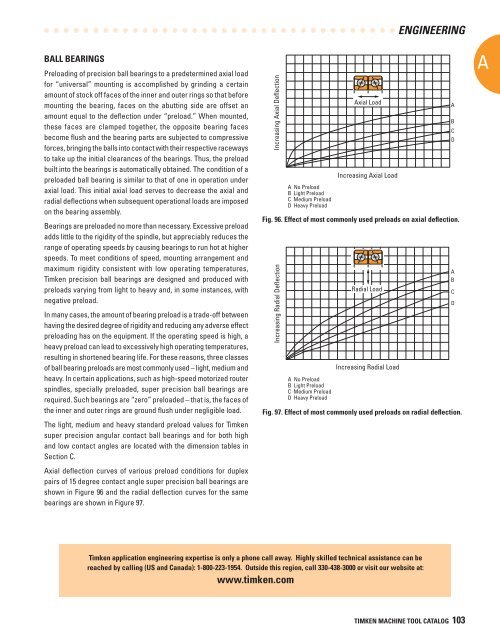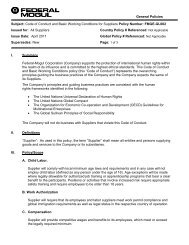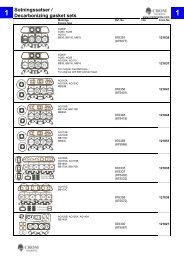You also want an ePaper? Increase the reach of your titles
YUMPU automatically turns print PDFs into web optimized ePapers that Google loves.
BALL BEARINGS<br />
Preloading of precision ball bearings to a predetermined axial load<br />
<strong>for</strong> “universal” mounting is accomplished by grinding a certain<br />
amount of stock off faces of the inner and outer rings so that be<strong>for</strong>e<br />
mounting the bearing, faces on the abutting side are offset an<br />
amount equal to the deflection under “preload.” When mounted,<br />
these faces are clamped together, the opposite bearing faces<br />
become flush and the bearing parts are subjected to compressive<br />
<strong>for</strong>ces, bringing the balls into contact with their respective raceways<br />
to take up the initial clearances of the bearings. Thus, the preload<br />
built into the bearings is automatically obtained. The condition of a<br />
preloaded ball bearing is similar to that of one in operation under<br />
axial load. This initial axial load serves to decrease the axial and<br />
radial deflections when subsequent operational loads are imposed<br />
on the bearing assembly.<br />
<strong>Bearings</strong> are preloaded no more than necessary. Excessive preload<br />
adds little to the rigidity of the spindle, but appreciably reduces the<br />
range of operating speeds by causing bearings to run hot at higher<br />
speeds. To meet conditions of speed, mounting arrangement and<br />
maximum rigidity consistent with low operating temperatures,<br />
<strong>Timken</strong> precision ball bearings are designed and produced with<br />
preloads varying from light to heavy and, in some instances, with<br />
negative preload.<br />
In many cases, the amount of bearing preload is a trade-off between<br />
having the desired degree of rigidity and reducing any adverse effect<br />
preloading has on the equipment. If the operating speed is high, a<br />
heavy preload can lead to excessively high operating temperatures,<br />
resulting in shortened bearing life. For these reasons, three classes<br />
of ball bearing preloads are most commonly used – light, medium and<br />
heavy. In certain applications, such as high-speed motorized router<br />
spindles, specially preloaded, super precision ball bearings are<br />
required. Such bearings are “zero” preloaded – that is, the faces of<br />
the inner and outer rings are ground flush under negligible load.<br />
The light, medium and heavy standard preload values <strong>for</strong> <strong>Timken</strong><br />
super precision angular contact ball bearings and <strong>for</strong> both high<br />
and low contact angles are located with the dimension tables in<br />
Section C.<br />
Axial deflection curves of various preload conditions <strong>for</strong> duplex<br />
pairs of 15 degree contact angle super precision ball bearings are<br />
shown in Figure 96 and the radial deflection curves <strong>for</strong> the same<br />
bearings are shown in Figure 97.<br />
Increasing Axial Deflection<br />
Increasing Radial Deflection<br />
A No Preload<br />
B Light Preload<br />
C Medium Preload<br />
D Heavy Preload<br />
Axial Load<br />
Increasing Axial Load<br />
ENGINEERING<br />
Fig. 96. Effect of most commonly used preloads on axial deflection.<br />
Radial Load<br />
Increasing Radial Load<br />
A No Preload<br />
B Light Preload<br />
C Medium Preload<br />
D Heavy Preload<br />
Fig. 97. Effect of most commonly used preloads on radial deflection.<br />
A<br />
B<br />
C<br />
D<br />
A<br />
B<br />
C<br />
D<br />
A<br />
<strong>Timken</strong> application engineering expertise is only a phone call away. Highly skilled technical assistance can be<br />
reached by calling (US and Canada): 1-800-223-1954. Outside this region, call 330-438-3000 or visit our website at:<br />
www.timken.com<br />
TIMKEN MACHINE TOOL CATALOG 103







